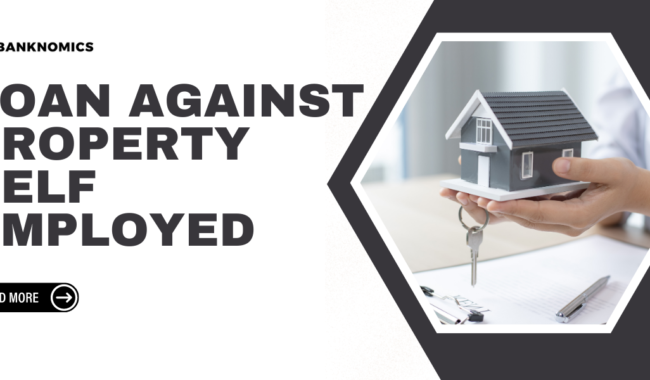People frequently think about different choices to get the necessary funds when they are faced with financial needs. Taking out a loans against property LAP is one of these options. Borrowers can enhance the loan amount with this type of loan by using the value of their property. Real estate-backed loans have several disadvantages, despite the fact that they are often advantageous. To provide you a thorough grasp of this financing option, we will cover both the advantages and disadvantages of loans secured by real estate in this piece.
What are Loans against Property LAP?
Mortgage loans, often known as loans against property, entail using one’s property as collateral to get a loan from a financial institution. The borrower’s eligibility requirements, the market value of the property, and whether it is a residential or commercial property all have an impact on the loan amount. These loans give people the chance to access the value of their property in order to satisfy a variety of financial needs.
Pros of Loans against Property LAP
Potential for Higher Loan Amounts
Compared to other types of loans, loans against property lap often provide access to larger loan amounts. Lenders are more likely to grant larger sums because the loan is secured by the value of the property. This can be very helpful for people who require large sums of money for things like business expansion, schooling, urgent medical needs, or debt consolidation.
Lower Interest Rates
Loans against property lap generally come with lower interest rates compared to unsecured loans. The collateral provides security to the lender, reducing the risk involved. Consequently, borrowers can enjoy the advantage of more affordable interest rates, resulting in reduced overall repayment amounts.
Longer Repayment Period
Another advantage of loans against property lap is the extended repayment period. These loans typically offer longer tenures, allowing borrowers to spread their repayment over several years. This feature can provide relief to borrowers who require smaller monthly installments, making it easier to manage their finances without undue stress.
Flexibility in Usage
Unlike specific-purpose loans, loans against property lap offer borrowers flexibility in utilizing the funds. Whether it’s funding a business venture, renovating a property, or covering personal expenses, borrowers have the freedom to use the loan amount as per their requirements. This versatility makes loans against property a convenient financing option.
Easy Accessibility
In general, securing a loan secured by real estate is easier than doing so for an unsecured loan, especially for those with less favorable credit. Lenders are more inclined to offer loans to borrowers with less than ideal credit histories since the property serves as collateral? More people can get the money they need because to this accessibility.
Improving Credit Score
Taking a loan against property lap and repaying it diligently can have a positive impact on one’s credit score. Timely repayments demonstrate responsible financial behavior, which reflects positively on the borrower’s creditworthiness. As the credit score improves, individuals may have better access to future credit opportunities and favorable terms.
Cons of Loans Against Property LAP
Risk of Property Seizure
Perhaps the most significant drawback of loans against property lap is the risk of property seizure in case of loan default. The lender has the legal power to seize and sell the property to recoup the unpaid balance if the borrower fails to repay the loan in accordance with the terms and circumstances. This risk makes it crucial for borrowers to evaluate their repayment capacity before opting for a loan against property.
Impact on Property Ownership
When availing a loan against property lap, the property’s ownership remains with the borrower. It is important to remember that the lender’s lien encumbers the title to the property. Till the Loan is fully repaid, the Borrower may not sell or otherwise part with the Property without the Lender’s consent. This restriction on property ownership can limit certain financial decisions and transactions.
Appraisal and Documentation
Obtaining a loan against property lap involves rigorous appraisal and documentation processes. Lenders typically require a comprehensive evaluation of the property’s value through professional appraisers. Additionally, borrowers need to provide extensive documentation, including property-related documents, income proofs, and other financial records. The complex and time-consuming nature of these processes can be a deterrent for some individuals.
Higher Eligibility Criteria
Loans against property lap often have stricter eligibility criteria compared to unsecured loans. Lenders consider various factors such as the borrower’s income, credit history, property value, and existing liabilities. Meeting these criteria can be challenging for individuals with limited income, lower credit scores, or properties with lower market values.
Longer Loan Processing Time
Due to the involved appraisal and documentation processes, loans against property lap generally have longer processing times compared to other types of loans. Borrowers should consider this aspect when opting for this financing option, especially if they require immediate funds for urgent financial needs.
Potential for Overleveraging
The accessibility of higher loan amounts in loans against property lap can lead to overleveraging. Borrowers must exercise caution and borrow only what they genuinely need and can comfortably repay. Overleveraging can increase the chance of loan default and put a strain on the budget, which could ultimately lead to the loss of the property.
Also Read: Tips for Buying Properties on Bank Auctions in India
Conclusion
Loans against property lap can be a viable financing option for individuals seeking substantial funds for various purposes. They provide benefits such bigger loan amounts, reduced interest rates, protracted repayment terms, and usage flexibility. However, it is essential to carefully evaluate any potential disadvantages, such as the possibility of property seizure, the effect on property ownership, the need for appraisals and supporting documentation, stricter eligibility standards, extended processing delays, and the risk of overleveraging. By carefully balancing the benefits and drawbacks, people can make an informed decision that matches their financial goals and circumstances.
Keep reading and supporting Banknomics!




